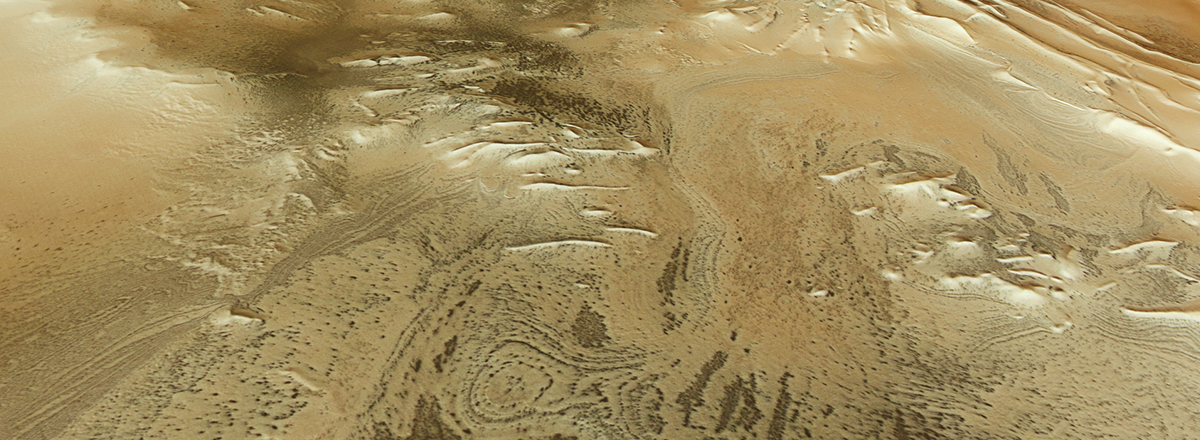ESA's Mars Express Reveals Spider-like Formations on Mars
The "spiders" range in size from 45 meters to as large as 1 kilometer across, formed by dust shooting up through the cracks in the ice in spectacular tall fountains or geysers.

The European Space Agency's (ESA) Mars Express orbiter has captured intriguing images of spider-like features on Mars, a phenomenon coinciding with the Martian spring. These formations, which appear in the southern polar region known as Inca City, resemble giant spiders from above but are purely geological in nature.
This natural Martian spectacle occurs when the spring sun warms the subsurface ice layers composed of carbon dioxide, which were deposited during the darker, colder winter months. As the ice turns into gas, it builds up pressure and eventually bursts through the overlying ice, carrying dark Martian dust upwards. This explosive release of gas and dust creates patterns that resemble the legs of a spider, etching them into the planet's surface.
The "spiders" range in size from 45 meters to as large as 1 kilometer across, formed by dust shooting up through the cracks in the ice in spectacular tall fountains or geysers. Once the dust settles back on the Martian surface, it leaves behind dark spots and a network of radial channels that give rise to their arachnid nickname.
These features are most prominent during the Martian spring and fade as the season progresses, becoming covered by the more familiar red Martian dust. The process repeats annually, marking the change of seasons on Mars with one of the planet's most peculiar and striking natural events.

